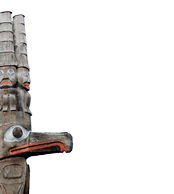 |
|||||||||
 |
|||||||||
 |
|||||||||

The School RoomUpon arrival at the cabin the four Sisters, along with their lay helper, Marie Mainville, were greeted by littered floors, a broken chair and cracked windowpanes. Of their new home, Sister Mary Angèle wrote: “A small boulder did duty for a door stop. Bishop stood on this and after opening the door said ‘Sisters, enter into possession of your convent.’ As the stone was rather high a gentleman helped the sisters up…. The flooring is good but there is no ceiling…inside the squared logs are absolutely bare.” The first evening meal was provided by neighbours Cecilia and Dr. Helmcken. Two days later the Sisters opened the school. The first classes used rough boards placed on packing crates for seats, learning their lessons on a portable blackboard and using slates, slate pencils and available readers. On November 1, 1858, Sister Mary Angèle wrote: “So far we have spread our mattresses on the floor at night and pile them in a corner in the daytime. We teach on one side of the chimney while the cooking, etc..goes on on the opposite side, and hammering on the left [this refers to the new addition being built]. Our pupils are quite content and so are we.” Completed in November of 1858, the new addition included a kitchen and a small chapel, and greatly improved the Sisters’ living situation. The addition was built by Brother Joseph Michaud, C.V.; Bishop Demers helped with wallpaper. By December of 1858 the original broken chair and table had been replaced by seven chairs, a cupboard for food, a donated horsehair sofa and three stoves, one of which was used for cooking. The first four Sisters to arrive on the island were largely French speaking; only Sister Mary Conception spoke English well. This fact hadn’t troubled them when they departed Quebec, as they had expected to find a small community where they would tutor both the children of First Nations background and children of the French-speaking fur traders. Instead, they found a bustling English-speaking community that was growing by leaps and bounds as merchants and gold seekers flooded in. Sister Mary Angèle wrote after their arrival in Victoria: “Our greatest surprise…was the sight of thousands of tents – numbered at thirty thousand [probably the number was closer to 5,000]. In San Francisco we had heard of the discovery of gold up in these parts, but we were not prepared for such a City of Tents.” It was essential that English-speaking teachers be sought and in 1859 two new Sisters, Sister Mary Providence and Sister Mary Bonsecours, arrived. The school’s growing population demanded a larger space, and in 1860 new premises were built on View Street closer to the centre of town. In 1861 again a new school building was opened. It was known as the “Brick Convent” because it was one of the first brick buildings built in Victoria; it was a boarding school, a day school and an orphanage. |
|
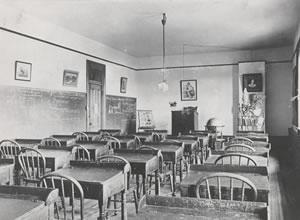 |
Classroom in St Ann’s Academy, 1895. BC Archives, A-7738
|
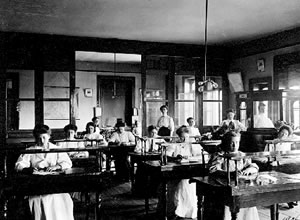 |
Classroom in St Ann’s Academy, 1906. BC Archives, A-7803 |
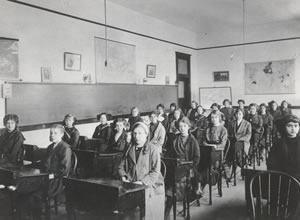 |
Classroom in St Ann’s Academy, about 1910. BC Archives, A-7755 |
|
|
Desk used in St Ann’s Academy, before 1900. Royal BC Museum, 987.40.2 |
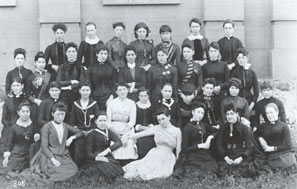 |
Summer class at St Ann’s, 1888. BC Archives, D-2214 |
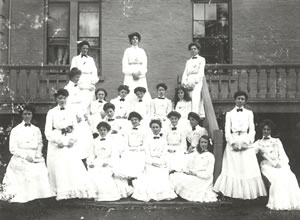 |
Modern programs were added, Stenographers and Bookkeeping Class, 1904. BC Archives, A-7815 |
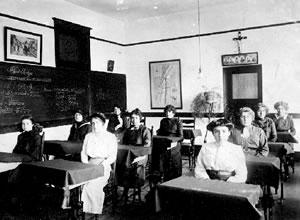 |
Students seated in St Ann’s in Victoria about 1910. BC Archives, A-7756 |
| The Building | The Students | Documents |
| Back to St Ann's Main Page |
